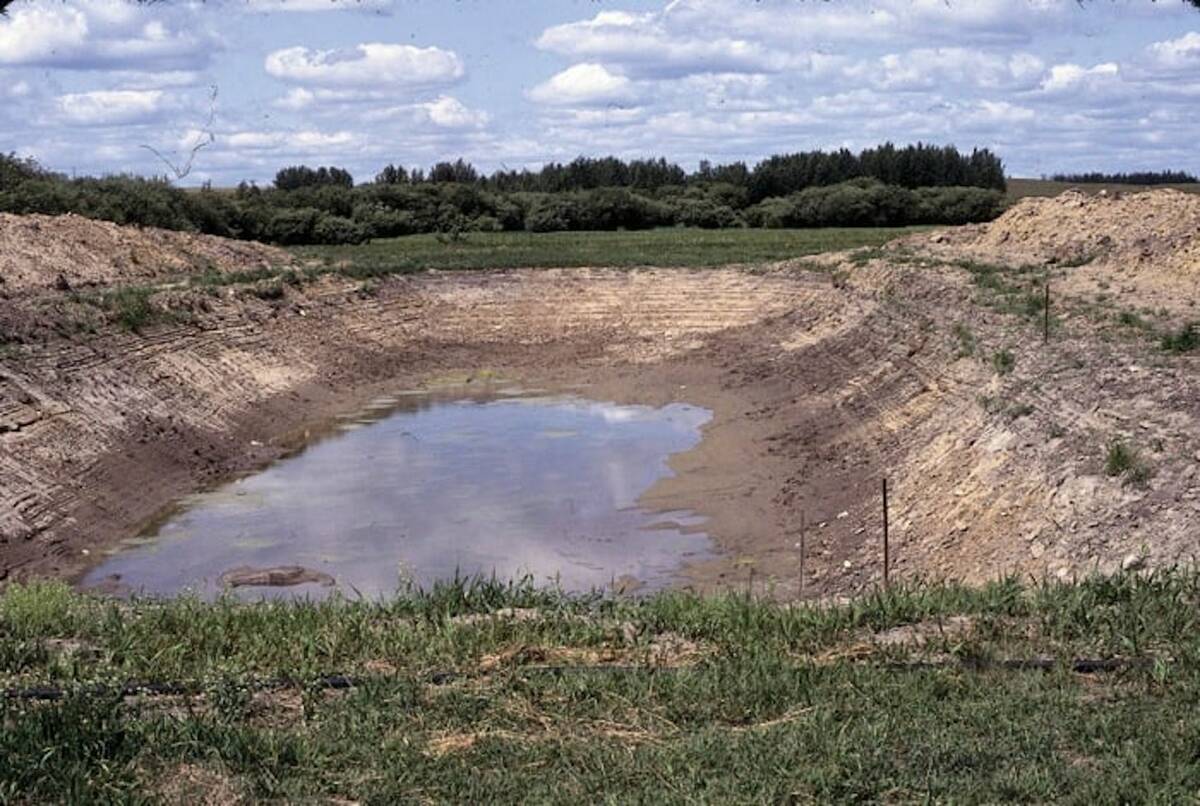After tagging 700 calves last year at branding, Neil Jahnke figures a national identification program for cattle can work.
Yet some rumbling remains as word of the program spreads through the countryside.
“I’m sure there’s lots of people who don’t know it’s coming,” said Jahnke, who ranches near Gouldtown, Sask., and is one of several prairie producers participating in tag trials.
His crew put in 700 eartags at a June branding session and by fall weaning 99 percent of the calves still had their tags in place. Part of the test involved tags with an identifying number while others had a bar code.
Read Also

Dry summer conditions can lead to poor water quality for livestock
Drought conditions in the Prairies has led to an decrease in water quality, and producers are being advised to closely monitor water quality for their animals.
Crew members found reading either tag didn’t slow them down as they went about their work.
Jahnke has never used tags before, but accepts it as part of the new reality for tracing diseases and ensuring food safety.
“We have to do it if we are going to maintain our export market,” he said.
He dismisses the concerns of producers who are worried about being held responsible if the tags help trace disease to their farms.
“We’ve got our heads in the sand,” he said, adding most people who want to stay in business would want to know if they have a disease problem so it can be cleared up without further losses.
“If it doesn’t come from your herd, then you’re clean.”
Being held responsible for disease is a common concern among producers who know their animals change owners several times and may pick up problems along the way.
Jack Daines of Innisfail Auction in Innisfail, Alta., said ranchers were taken by surprise when notices went up advertising the national identification program. He said some producers are worried about the cost and feel the government should share some of the expense.
Misunderstanding does exist about the program’s goals, acknowledges Julie Stitt, general manager of the Canadian Identification Agency, but she also said many producers don’t have a problem putting a tag in their cattle’s ears.
“Anybody who is tagging for management, it is not a major deal for them,” she said.
“Our program is primarily for reportable diseases. It will assist in some safety concerns down the road.”
Not a medical history
The program gives animals a single identifying number that is stored in a database.
It does not list medications, diseases and ranch names, and it isn’t a passport system that records every movement an animal makes, such as what is used in Great Britain.
If disease appears, the tag’s number is used to narrow the search for the source of the problem. The search will start with the original herd the animal came from.
“We’re not tracking anything back to the feedlot,” she said. “If the packer wants to track anything back to the feedlot, they can do that now.”
Stitt said producers shouldn’t worry that the program will replace brands.
They can continue to brand if they want, she said, but the tags will be a more permanent way to identify animals, even after the hide has been removed from the carcass.
If a problem is detected in a carcass, the Canadian Food Inspection Agency will ask the identification agency for traceback information. The tag narrows the search to see where the problem started. If nothing is wrong, the number is retired from the agency’s database.
The concept has widespread support from feedlots and large commercial herds, but Alberta seems to be the centre of discontent, Stitt said.
The Alberta Cattle Commission has mailed 40,000 brochures to members, and information has been sent to auction marts and vet clinics.
The tags have been tested in 75 herds and the agency has narrowed its preference down to eight types. It has also placed 30,000 tags in major feedlots to see if the tags stay on the cattle and whether they are readable in a packing plant.
The agency hopes to keep the cost of the tags at $1 each. It is not using electronic identification because of the extra cost. The initial plan is to use bar codes that can be quickly read at a packing plant.
Target date for implementation is Dec. 31, 2000. Anyone looking for more information may call toll free at 1-877-909-BEEF.

















